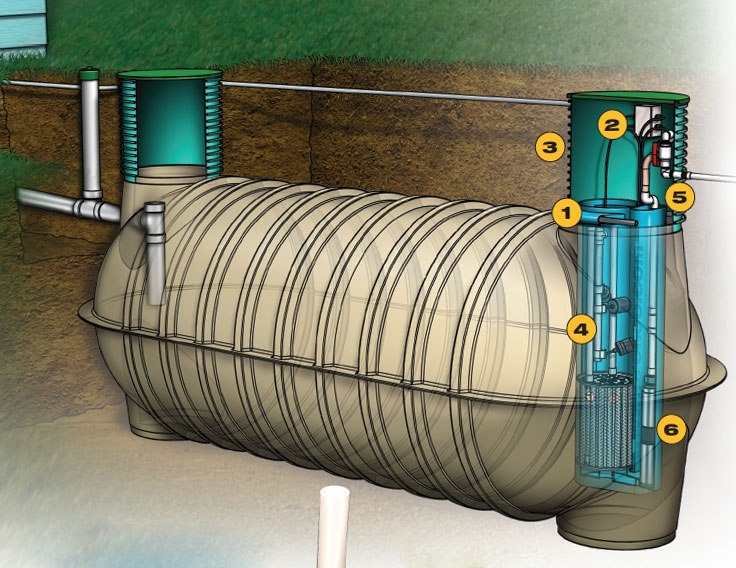WE NOT ONLY PUMP YOUR TANK - WE CLEAN IT! Up to 36 Months Financing Available
Call Septic Blue Now 813-355-9188
It's Easier Schedule Online
WE NOT ONLY PUMP YOUR TANK - WE CLEAN IT! Up to 36 Months Financing Available
Call Septic Blue Now 813-355-9188
It's Easier Schedule Online

For effective wastewater treatment in both residential and commercial settings, a lift station's upkeep is essential. Lift stations are essential for moving wastewater and sewage from lower to higher altitudes, avoiding backlog, and guaranteeing correct disposal. It is crucial for septic specialists, homeowners, and property managers to comprehend the parts of a lift station.
In this blog post, our professionals from Septic Blue will delve into the key components of lift stations and their importance in the sewage disposal process.
It's important to understand the basic function of a lift station before going into the parts. In basic terms, the purpose of a lift station is to move wastewater or sewage from a lower altitude to a higher one so that gravity may handle the remaining transportation or treatment. Lift stations are typically located in places where the terrain makes gravity-only sewage disposal difficult.
One of the critical components of a lift station is the pump itself. The wastewater must be raised by the pump from the lower level to the higher elevation so that it can pass through the sewage system. To guarantee the pump functions effectively, routine maintenance is essential, which includes septic tank pumping. Regular pumping services can help prevent pump failure and increase the lift station's lifespan.
Lift stations are outfitted with advanced monitoring and control mechanisms to manage pump functioning and identify any issues. These systems give operators the ability to keep an eye on fluid levels, pump status, and overall system performance through the use of sensors, alerts, and control panels. Purchasing a dependable monitoring and control system is necessary to identify problems early and take prompt action, avoiding expensive repairs and downtime.
Lift stations may occasionally need repairs despite routine maintenance due to wear and tear or unforeseen problems. Common issues include pump failure, electrical problems, and corrosion of components. Prompt septic tank repair is essential when dealing with lift station issues in order to avoid sewage backups and environmental risks. Utilizing the services of a certified septic tank repair expert guarantees that problems are resolved quickly and efficiently, returning the lift station to peak performance.
Septic systems are designed to handle a specific volume of…
Read More+Unlike public sewer systems, your septic tank has a limited…
Read More+Winter is approaching, which means homeowners should pay more attention…
Read More+A lift station's long-term functionality depends critically on its installation. To optimize efficiency and dependability, variables including location, pump capacity, and system design are carefully taken into account during the septic tank installation process. By using skilled experts, you may reduce the possibility of future issues by ensuring that the lift station is installed in compliance with local and industry requirements.
Lift station components must have routine maintenance and cleaning in order to maintain their integrity and avoid expensive repairs. Testing pump performance, looking for leaks, lubricating moving parts, and cleaning pump chambers are a few examples of scheduled maintenance duties. Furthermore, regular septic tank cleaning clears built-up waste and sediments, avoiding obstructions and extending the life of the lift station.
Are you in need of a septic company? Luckily, we at Septic Blue have dedicated workers ready at your service. Contact our representatives for more questions regarding this matter to solve your situation today.